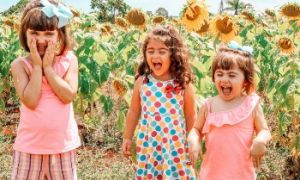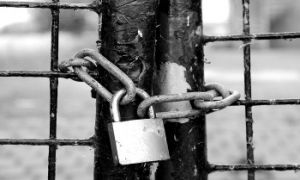

There is often a debate on whether colouring pages should be used in early childhood services. Do they limit creativity? Or foster creativity? Do they restrict children from thinking freely? Or can it they be used as inspiration? The following article provides information on the Pro and Cons Of Colouring Pages, Does Colouring Pages Hinder Creativity, Using Colouring Pages To Complement Open Ended Activities, Colouring Pages and the EYLF and more.
Street Libraries are small houses for books, installed outside your early learning service, accessible to the community, where people within the community can simply reach in and borrow a book that interests them; when they are done, they can return them back to the Street Library or pass them on to friends. The following article provides information on How Does A Street Library Work, Setting Up A Street Library, Getting Children Involved and more.
Positive phrases play a crucial role in children's growth because they help nurture their emotional, social, and cognitive development. The following article lists 30 positive phrases that educators should say to children.
MYTH: You have to attend work meetings after hours for free. FACT: You should be paid. MYTH: You need to pay for training. FACT: You are paid for those hours. Your employer must pay you for all hours you work and any compulsory time spent for work, including meetings and training.
Nature programs in early childhood settings are a fantastic way to connect children with the natural world and promote holistic development. The following article provides information on Key Aspects Of Nature Programs, Benefits of Nature Programs, How To Start A Nature Program, Nature Programs and The EYLF, Nature Activity Ideas and more.
Connecting with local Aboriginal and Torres Strait Islander (ATSI) communities can be a rewarding and enriching experience. The following article provides information on Steps To Seek Support and Build Relationships With ATSI Communities, Ensuring Involvement Is Respectful To ATSI Communities, How To Seek Permission To Use Or Share ATSI Stories Or Materials, Seeking Permission In NSW, Getting Involved With Local ATSI Organisations and more.
Embedding Aboriginal and Torres Strait Islander (ATSI) perspectives and pedagogies in Early Years education environments is essential for several reasons. The following article provides infromation on the Importance Of Embedding ATSI Perspectives And Pedagogies In The Early Years Education Environments, Incorporating ATSI Perspectives Into Your Practice, Incorporating ATSI Histories and Cultures in EYLF Curriculum, Examples Of Effective Activities, EYLF and ATSI Perspectives and more.
The Australian 24-Hour Movement Guidelines for the Early Years provide comprehensive recommendations for physical activity, sedentary behavior, and sleep for children from birth to 5 years. The following article provides information About The Australian 24-Hour Movement Guidelines for the Early Years, Key Recommendations, and more.
Children's drawing isn't just a pastime—it plays a crucial role in their development and learning. The following article provides information on Why Drawing Is Essential For Children, Activities That Can Promote Drawing Skills In Children, Age-appropriate Drawing Activities For Toddlers, How Drawing Helps Children Express Their Emotions, Activities That Can Help Children Express Emotions Through Drawing and more.
 Here is the list of the EYLF Learning Outcomes that you can use as a guide or reference for your documentation and planning. The EYLF… Read More
Here is the list of the EYLF Learning Outcomes that you can use as a guide or reference for your documentation and planning. The EYLF… Read More
 The EYLF is a guide which consists of Principles, Practices and 5 main Learning Outcomes along with each of their sub outcomes, based on identity,… Read More
The EYLF is a guide which consists of Principles, Practices and 5 main Learning Outcomes along with each of their sub outcomes, based on identity,… Read More
 This is a guide on How to Write a Learning Story. It provides information on What Is A Learning Story, Writing A Learning Story, Sample… Read More
This is a guide on How to Write a Learning Story. It provides information on What Is A Learning Story, Writing A Learning Story, Sample… Read More
 One of the most important types of documentation methods that educators needs to be familiar with are “observations”. Observations are crucial for all early childhood… Read More
One of the most important types of documentation methods that educators needs to be familiar with are “observations”. Observations are crucial for all early childhood… Read More
 To support children achieve learning outcomes from the EYLF Framework, the following list gives educators examples of how to promote children's learning in each individual… Read More
To support children achieve learning outcomes from the EYLF Framework, the following list gives educators examples of how to promote children's learning in each individual… Read More
 Reflective practice is learning from everyday situations and issues and concerns that arise which form part of our daily routine while working in an early… Read More
Reflective practice is learning from everyday situations and issues and concerns that arise which form part of our daily routine while working in an early… Read More
 Within Australia, Programming and Planning is reflected and supported by the Early Years Learning Framework. Educators within early childhood settings, use the EYLF to guide… Read More
Within Australia, Programming and Planning is reflected and supported by the Early Years Learning Framework. Educators within early childhood settings, use the EYLF to guide… Read More
 When observing children, it's important that we use a range of different observation methods from running records, learning stories to photographs and work samples. Using… Read More
When observing children, it's important that we use a range of different observation methods from running records, learning stories to photographs and work samples. Using… Read More
 This is a guide for educators on what to observe under each sub learning outcome from the EYLF Framework, when a child is engaged in… Read More
This is a guide for educators on what to observe under each sub learning outcome from the EYLF Framework, when a child is engaged in… Read More
 The Early Years Learning Framework describes the curriculum as “all the interactions, experiences, activities, routines and events, planned and unplanned, that occur in an environment… Read More
The Early Years Learning Framework describes the curriculum as “all the interactions, experiences, activities, routines and events, planned and unplanned, that occur in an environment… Read More

The Early Years Learning Framework outlines five principles that reflect contemporary theories and research evidence...
See more...
If your service closes due to COVID-19, it’s important to understand what your obligations are...
See more...
You have a new child starting in your room, their excited, their parents are happy...
See more...© 2009-2025 Aussie Childcare Network Pty Ltd. All Rights Reserved.
